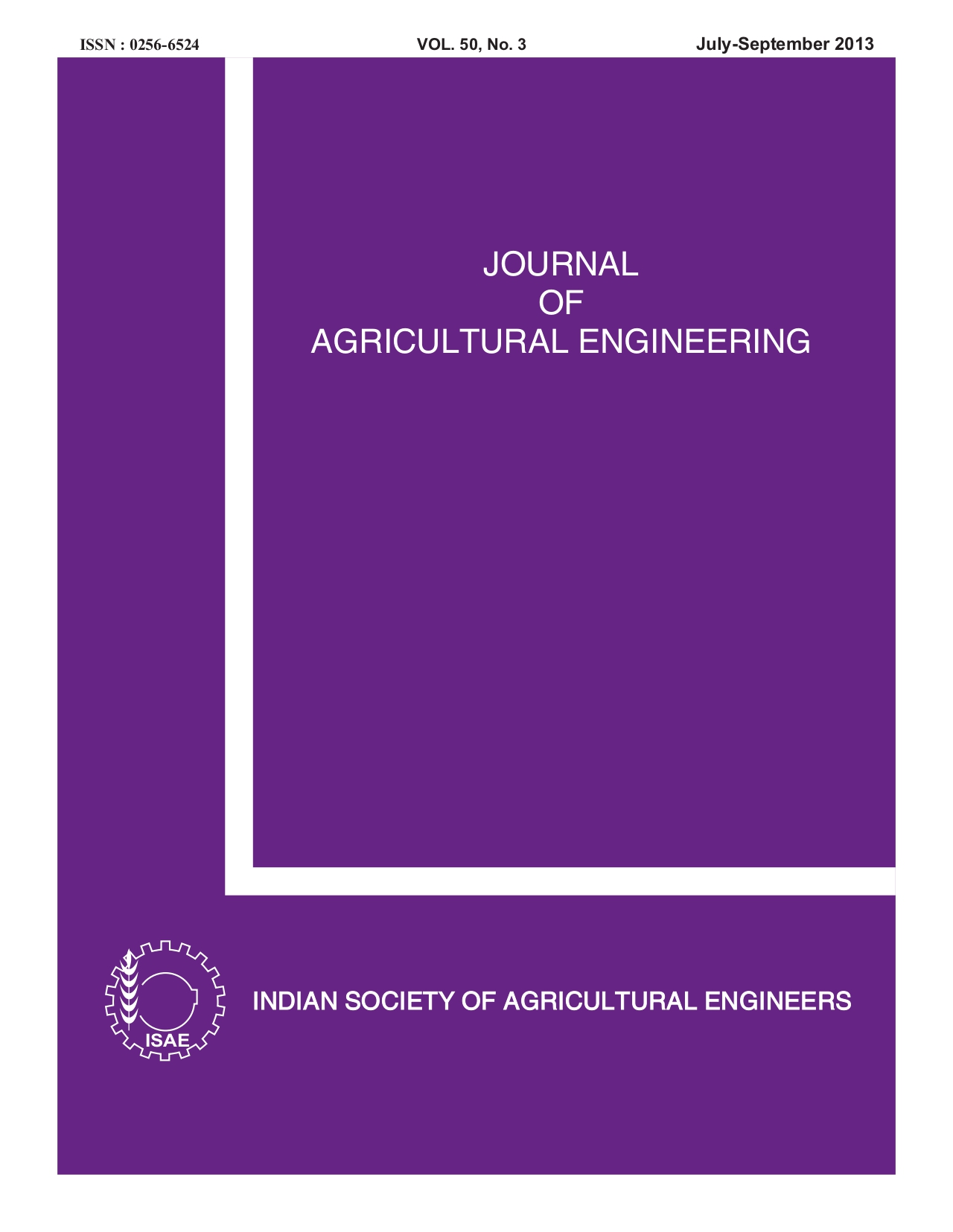Self Regulating Wick Type Zero Energy Hydroponics System for Greenhouse Tomatoes
DOI:
https://doi.org/10.52151/jae2013503.1525Keywords:
Greenhouse, hydroponics, tomato, wick type, zero energyAbstract
Hydroponics, using an alternate porous media than soil, is a technique to grow vegetables and ornamental plantsReferences
Bar-Yosef B. 2008. Fertigation management and crops response to solution recycling in semi-closed greenhouses. In: Raviv M; Lieth H. (Eds.), Soilless Culture, Theory and Practices. Elsevier, Amsterdam, 341–424.
Bradley P; Marulanda C. 2000. Simplified hydroponics to reduce global hunger. Acta Hort., 554, 289–295.
Carmassi G; Incrocci L; Maggini R; Malorgio F; Tognoni F; Pardossi A. 2005. Modeling salinity build-up in recirculating nutrient solution culture. J. Plant Nutr., 28,43–445.
Grewal H S; Basant Maheshwaria; Sophie E Parks. 2011. Water and nutrient use efficiency of a low-cost hydroponic greenhouse for a cucumber crop: An Australian case study. Agric. Water Manage., 841-846.
Hitchon G M; Szmidt R A K; Hall D A. 1991. A lowtechnology hydroponic crop production system based on expanded perlite. Acta Hort., 287, 431–434.
Jovicich E; Cantliffe D J; Simonne E H; Stoffella P J. 2007. Comparative water and fertilizer use efficiencies of two production systems for cucumbers. In: Mc Conchie R; Rogers G. (Eds.), Proceedings 3rd International Symposium on Cucurbits. Acta Hort., 731, 235–241.
Maboko M M; Du Plooy C P; Chiloane S. 2011. Effect of plant population, fruit and stem pruning on yield and quality of hydroponically grown tomato. African J. Agric. Res., 6(22), 5144-5148.
Parks S E; Worrall R J; Low C T; Jarvis J A. 2009. Initial efforts to improve the management of substrates in greenhouse vegetable production in Australia. Acta Hort., 819, 331–336.
Schnitzler W H; Sharma A K; Gruda N S; Heuberger H T. 2004. A low-tech hydroponic system for bell pepper (Capsicum Annuum L.) production. Acta Hort., 644, 47-53.
Sheikh B A. 2006. Hydroponics: key to sustain agriculture in water stressed and urban environment. Pak. J. Agric., Agric. Eng., Vet. Sci., 22, 53-57.
Valenzano V; Parente A; Serio F; Santamaria P. 2008. Effect of growing system and cultivar on yield and wateruse efficiency of greenhouse-grown tomato. J. Hort. Sci. Biotechnol., 83, 71–75.














